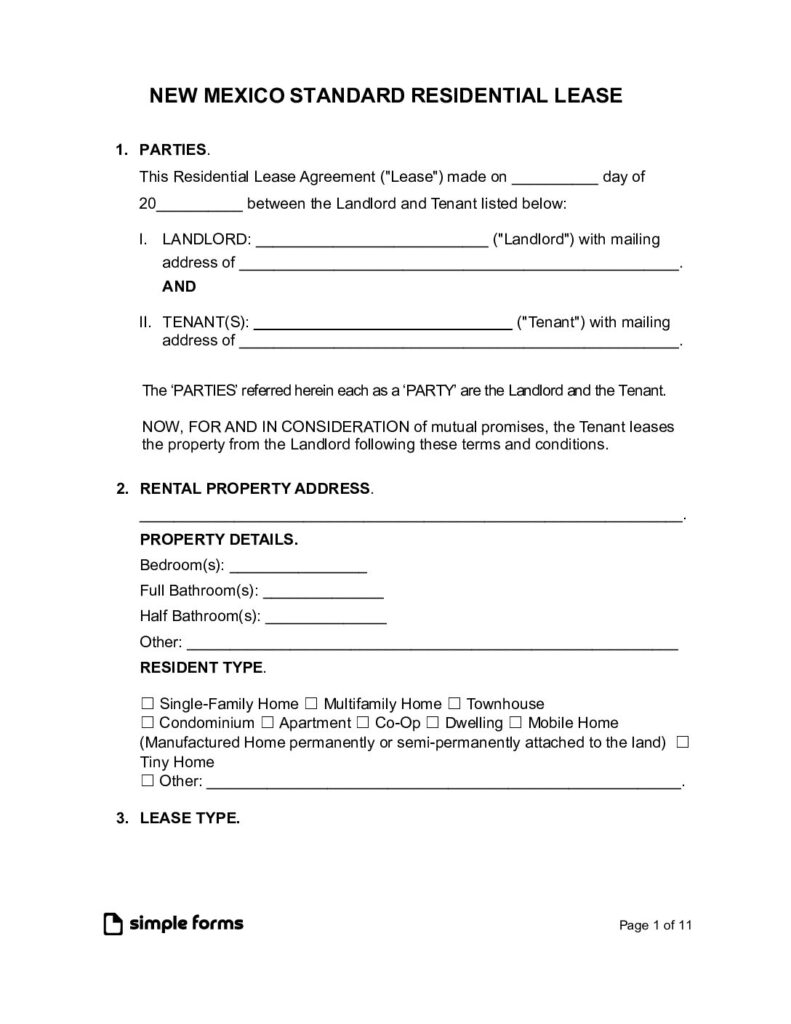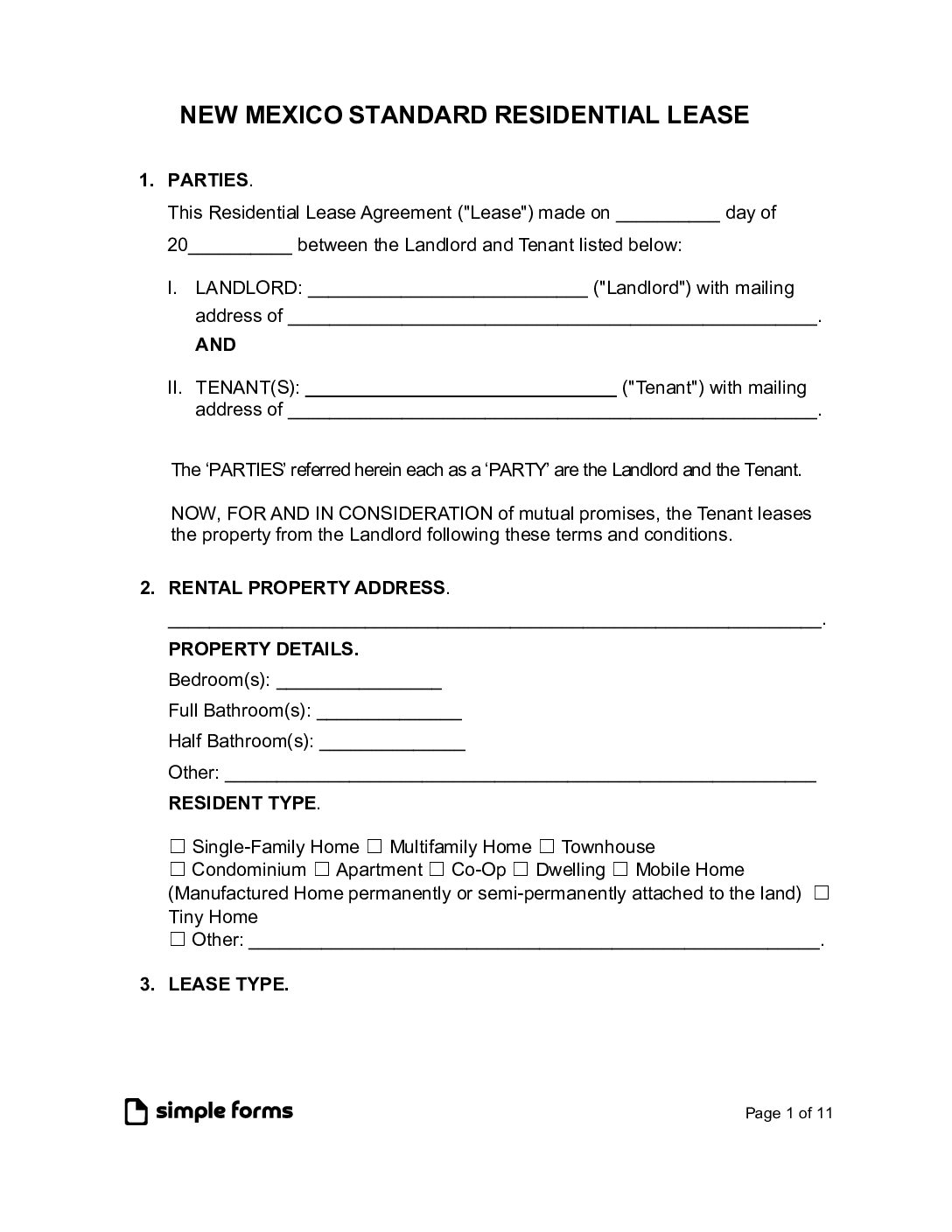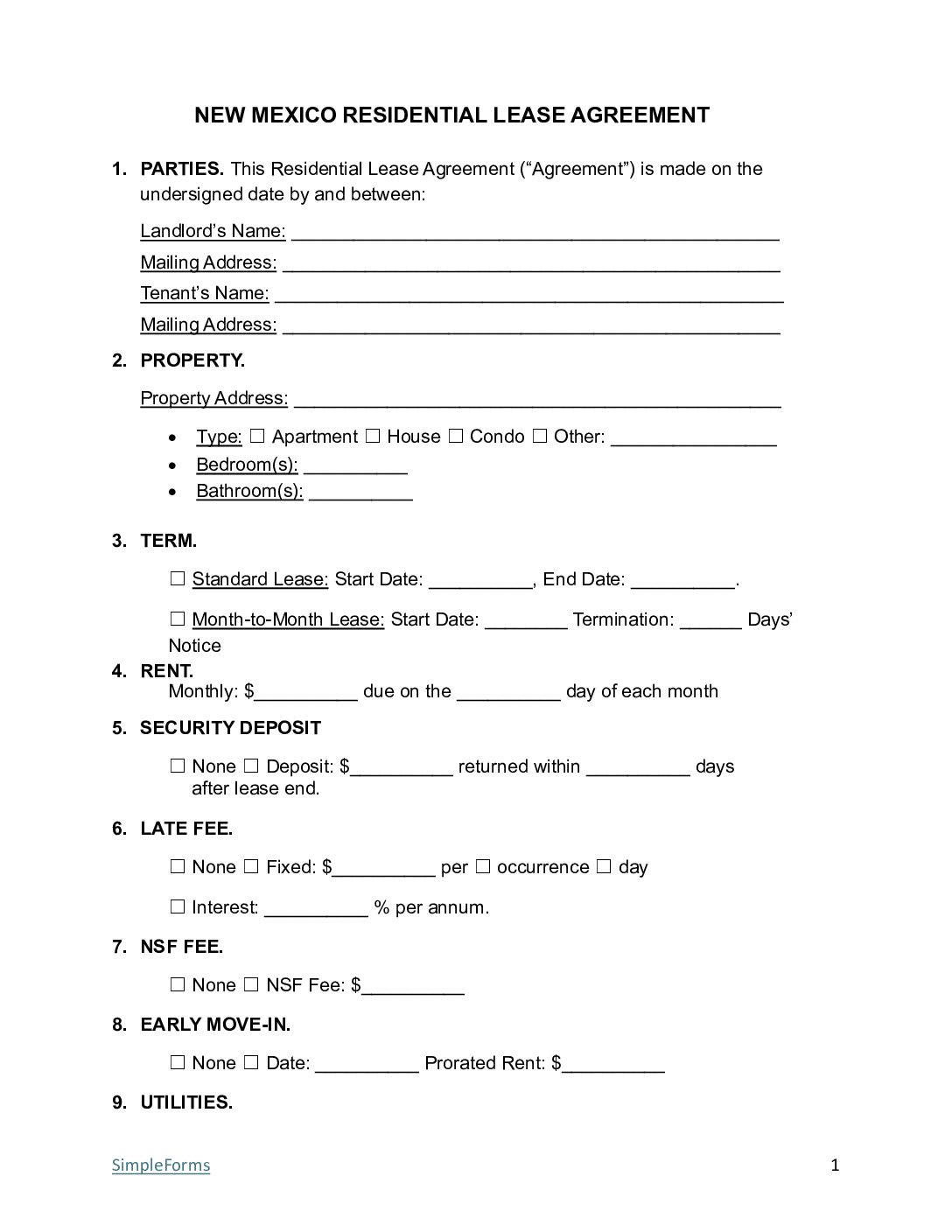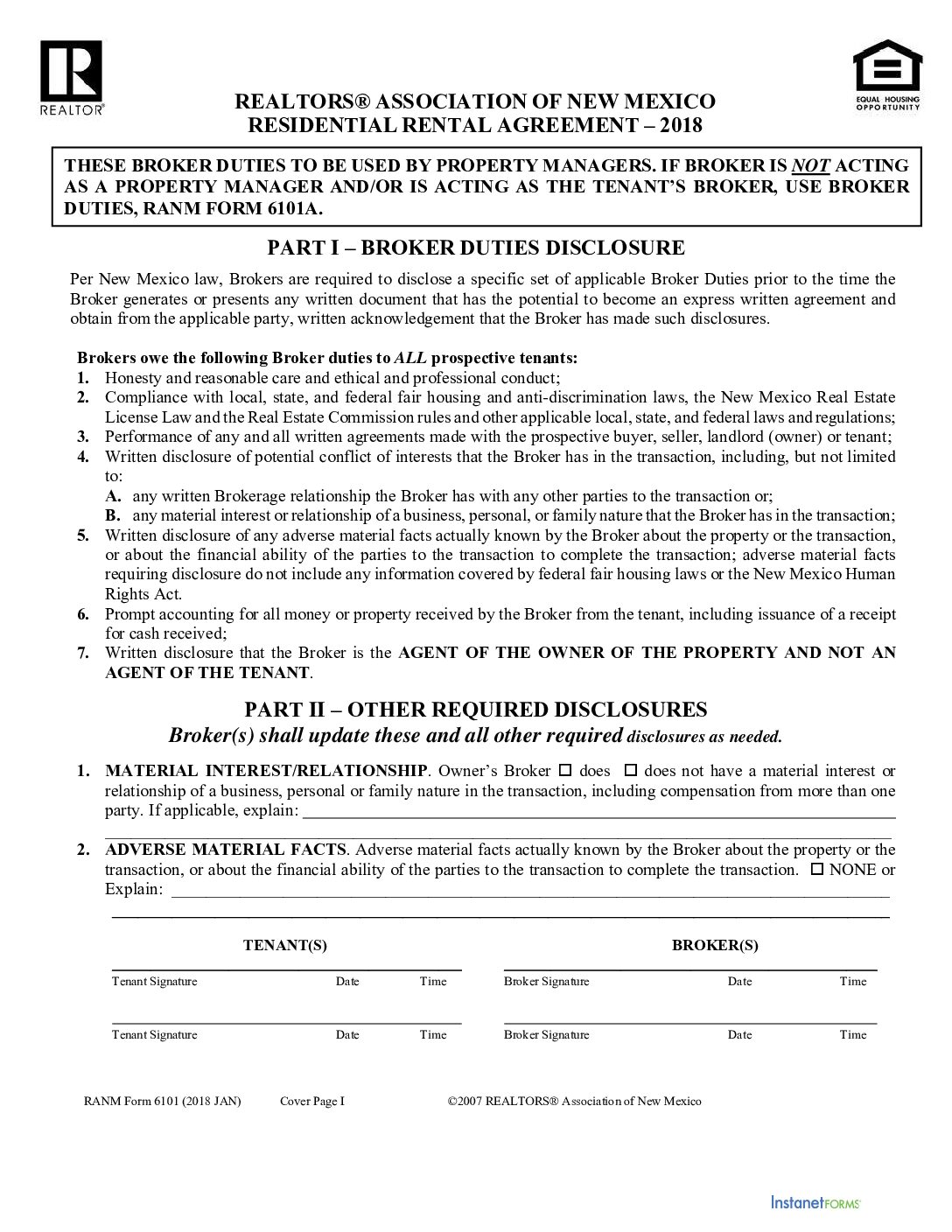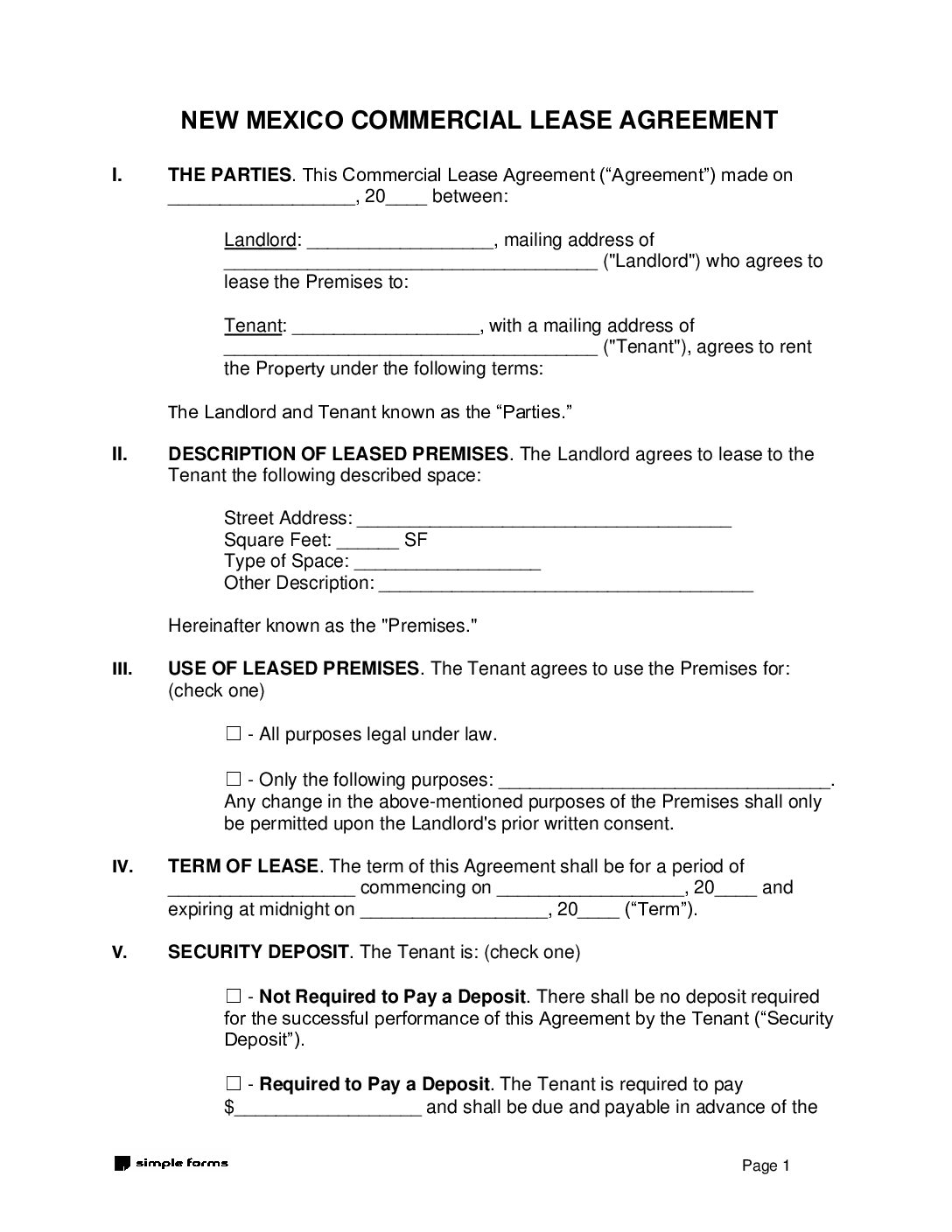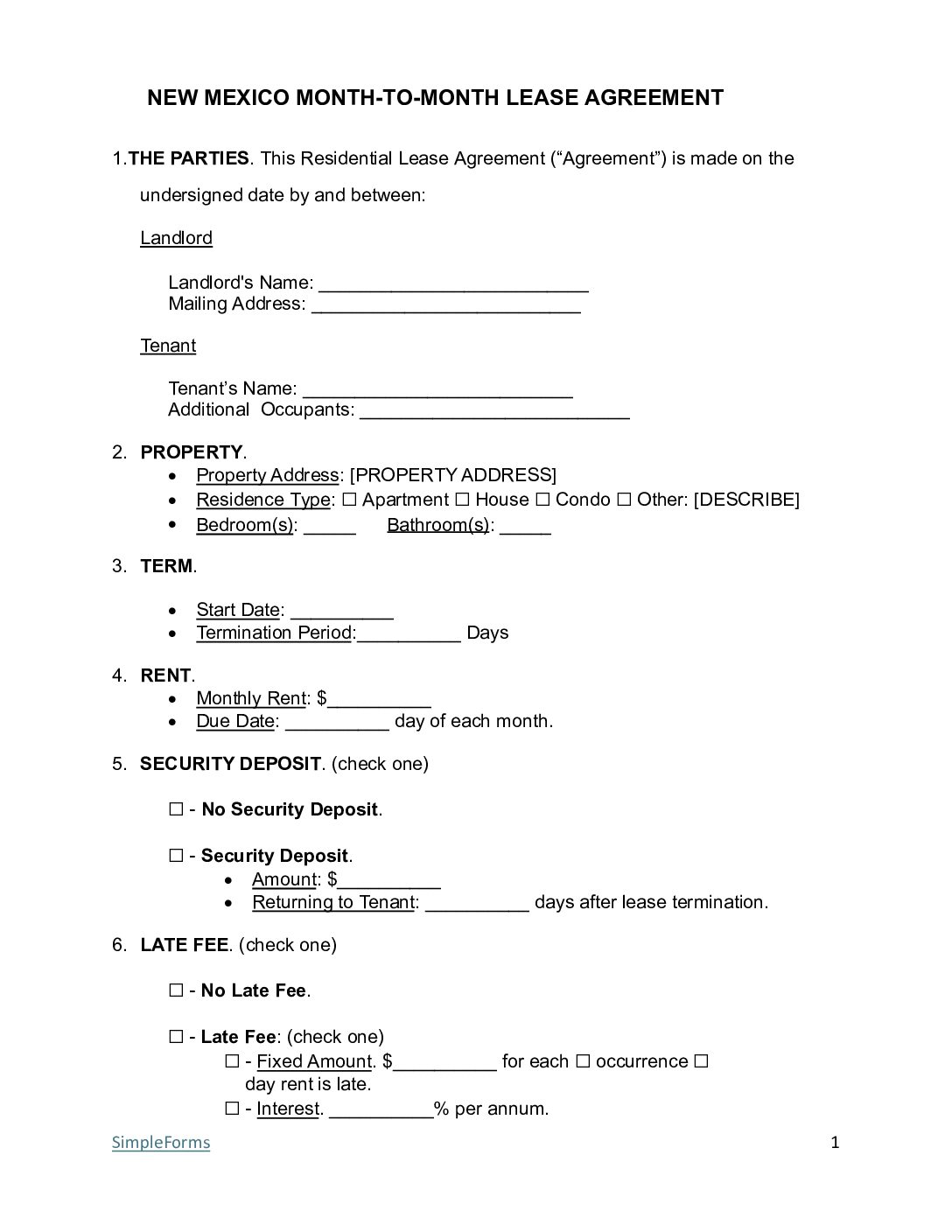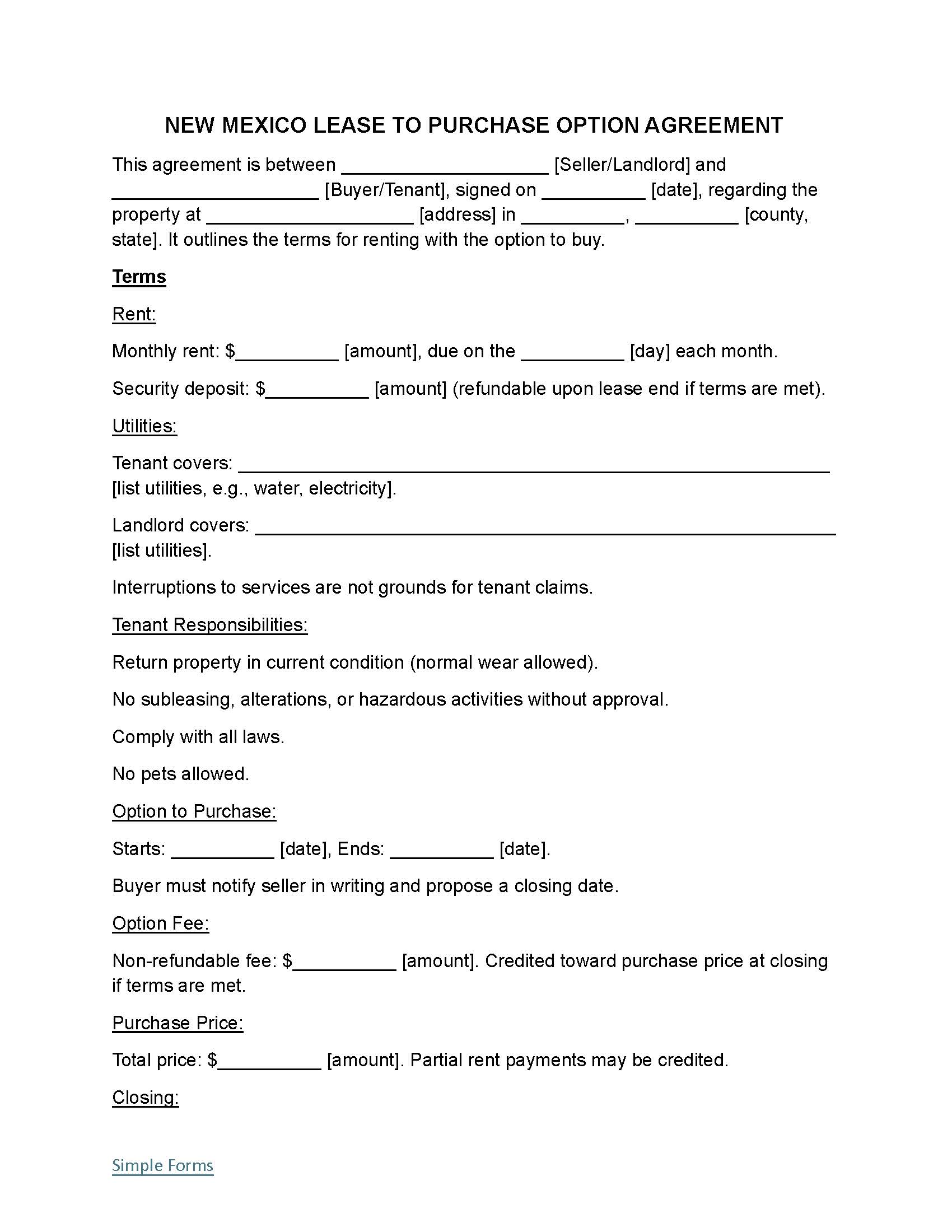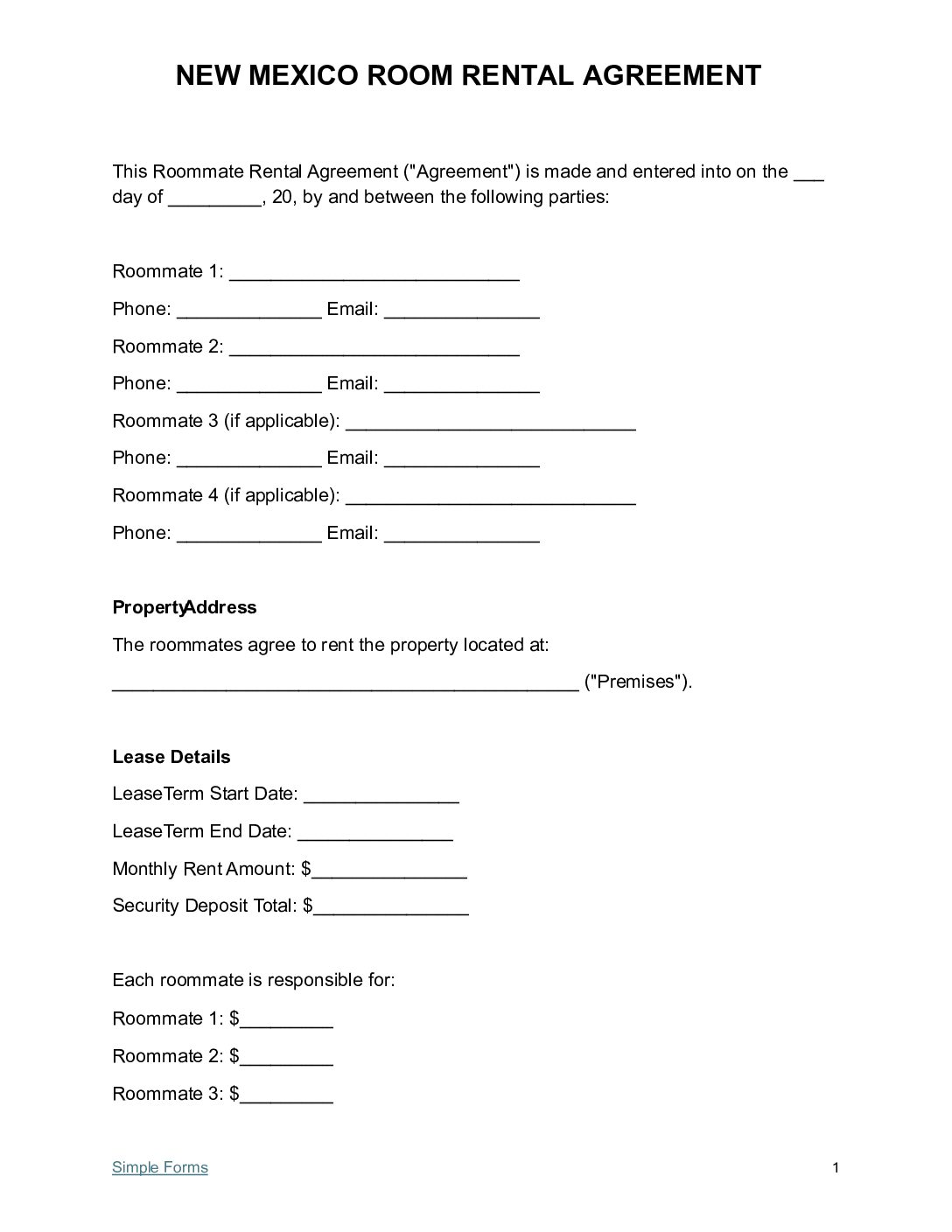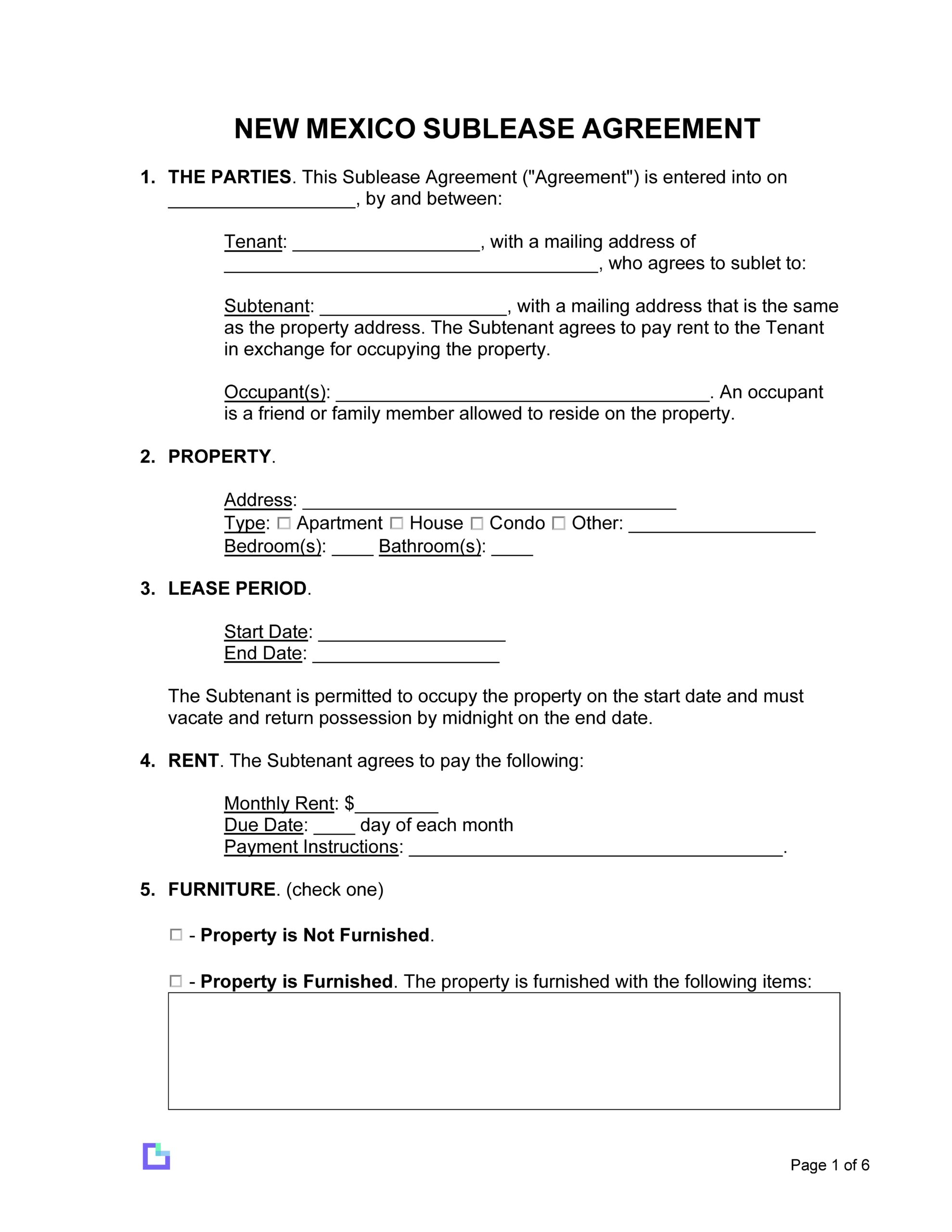Rental Application Form– The Landlord can request a rental application from Tenants to verify the financial credentials. Once approved, both parties can sign the New Mexico rental lease agreement.
New Mexico Rental Lease Agreements By Type (7)
| Residential Lease Agreement – Standard residential lease with a 1-year or more lease term. Download: PDF | Word (.docx) |
|
| Association of Realtors – A lease agreement used by a Realtor to help a landlord or tenant manage tenancy. Download: PDF | Word (.docx) |
|
| Commercial Lease Agreement – For renting space for office, industrial, or retail purposes. Download: PDF | Word (.docx) |
|
| Month-to-Month Lease Agreement – Known as a “tenancy at will,” this agreement has no set end date and continues until either party gives at least 30 days’ notice. Download: PDF | Word (.docx) |
|
| Rent to Own Lease Agreement – A standard rental agreement that gives the tenant the option to purchase the property for an agreed-upon price. Download: PDF | Word (.docx) |
|
| Roommate Lease Agreement – An agreement between individuals in a shared residence to establish rules and expectations. Download: PDF | Word (.docx) |
|
| Sublease Agreement – For a tenant looking to rent out the space they are leasing from the landlord. Download: PDF | Word (.docx) |
What the form covers?
This New Mexico Rental Lease Agreement includes New Mexico landlord-tenant laws:
- New Mexico Residential Landlord-Tenant Laws
- Security Deposit Law
- Lease Termination
- Landlord’s Access to the Property
- Required Disclosure Forms
- Rent Due Date plus Late Fees
New Mexico Residential Landlord-Tenant Laws
Summary: Landlords must make sure that rental properties complies with health and safety codes and is habitable which are governed by the Uniform Owner-Resident Relations Act (UORRA).[1]
Security Deposit Law
Summary:
- 30 Days – Landlords must return the security deposit within 30 days of lease termination.
- Itemized List – Deductions must be itemized and shared with the tenant.
- Maximum – For leases less than one year, the security deposit cannot exceed one (1) month’s rent.[2]
Lease Termination
Summary: Both landlords and tenants can terminate a lease under certain conditions:
- Landlord’s Ability to Terminate
- 3-day notice for nonpayment of rent.
- 7-day notice for lease violations.
- Tenant’s Ability to Terminate
- Tenants may terminate due to habitability issues after notifying the landlord.
- 30-day notice required for month-to-month leases.[3]
Landlord’s Access to Property
Summary: Landlords must provide 24 hours’ notice before entering the property, unless it’s an emergency.[4]
Required Disclosure Forms (2)
Summary:
- Lead-Based Paint Disclosure Form – Landlords must provide a brochure if the property was built before 1978.
- Move-in Checklist – Tenants must report any property issues upon move-in to avoid responsibility for pre-existing damage.
- Landlord Identity – The landlord must inform the tenant of who is authorized to manage the property or act for the owner and provide full legal name and mailing address to send notices.[5]
Paying Rent
Summary:
Tenants Rights and Freedom from Retaliation Laws
Summary: Freedom from retaliation laws state that landlords cannot punish tenants for the following.
- Reporting health or safety violations.
- Requesting repairs.
- Joining a tenant organization.
Examples of retaliation include raising rent, reducing services, or attempting eviction.[8]
